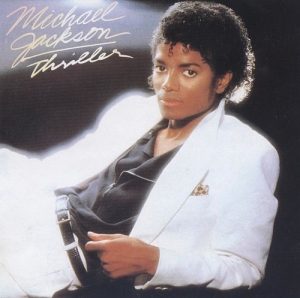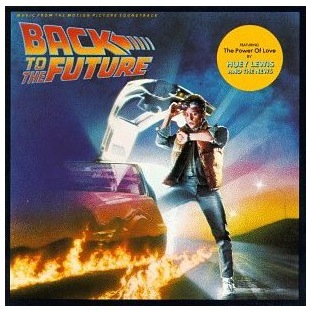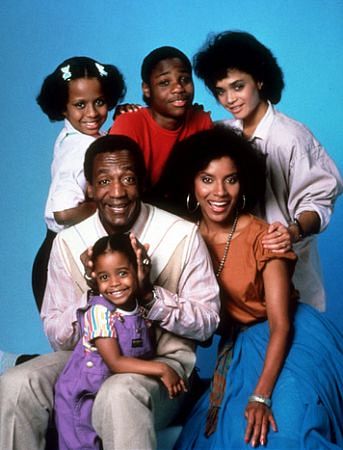
Certainly when you look back at the 1980s and the icons of the era, you won’t ever get far on that list without thinking of Michael Jackson. So his death comes at perhaps one of Eightiesology’s greatest tragedies. Obituaries and speculation and contemporary invocation are best left for other websites. They’re going to bring up the man’s eccentricities and the scandals that pursued his later years, and I don’t deny they made Jackson a very inaccessible person to me. In fact, I’ve often felt his total solo output wasn’t as grand as touted, certainly not for a self-proclaimed King of the genre. But nobody growing up in that era could deny the impact his music had at some or another, whether on your own nostalgia of moments in your life or on the very pop culture that is the bedrock of the ‘80s.
Though rivaled by his years with the Jackson 5, the ‘80s were certainly his most formidable era, with his two biggest albums, Thriller and Bad, dropping in the heart of the decade. (Off the Wall and Dangerous fell on the fringes of either side of the decade but had strong connections to the ‘80s, though the latter album was essentially the beginning of Jackson’s creative end.) Yet the heyday of MTV kept Jackson in the spotlight for what seemed like every single day of that decade. His grand usage of the music video format helped put the channel on the map and may be one of the most brilliant uses of the medium as a marketing tool. And he ended up transcending the radio-and-MTV template of the time by expanding into charity work, long-form videos (like “Thriller” and “Moonwalker”) and even theme park entertainment (EPCOT’s Captain EO). By the end of the decade, many of our generation grew tired of Jackson’s increasing presence in tabloids due to his eccentricities and scandalous behavior. The music eventually wore thin too as Jackson broke very little ground after Bad.
In retrospect, you realize how ever-present the artist was for everyone who lived through the decade. I can’t speak to devoted fandom here and unlike the narcissistic celebrities coming out of their Twitter hives, am not going to stand here and preach about how Michael Jackson was a genius or a beacon in my life. As I’m sure many people speaking from honesty would agree. But part of what I’ve attempted to do here on this blog is celebrate the whimsy and innocence of the ‘80s (as I’ve often stated, without the snarky irony hoisted upon us by the VH1 generation). For me, the strongest aspect of that has always been the music and how it invokes such a strong memory to certain moments or periods of our lives throughout the time. And you just can’t go very far without having a Michael Jackson song soundtrack one of those moments.
Thriller was released in 1982 but stuck around for years after with the last single, “Thriller” stretch the success well into 1984. For me, that meant the album hit the airwaves starting when I was 8 years old and soundtracked 2nd – 4th grade for me and my friends. That would put the album in one of those ‘80s nostalgia vortexes for me. In 1982, I visited Walt Disney World for the first time and when that summer was over, transferred over with a dozen classmates from a primary school to the larger elementary school. Between the new school and increased activity in sports and Cub Scouts, this was a time of many new friendships. 1982 really was the start of a different style of ‘80s music as the earliest hits of the ‘80s tended to have more of a punk or new age aesthetic before giving way to the more familiar pop. So memories of those times are incredibly intertwined with the advent of the pop sounds of the era.
I have to admit, part of my nostalgia for Jackson’s videos were the inevitable Weird Al Yankovic parodies, most memorably “Eat It” and “Fat.” But those videos were only as successfully as the imagery they were parodying. They just couldn’t work if you hadn’t seen “Beat It” and “Bad” a dozen times a day. To me, the more memorable of Jackson’s hit videos was “Billie Jean.” Elements of the video were a bit scary to me, but I don’t know that there were many kids in America who hadn’t hoped that by walking down a sidewalk, they too couldn’t trigger a hopscotch lighting effect where they walked! Eerie and cool, a great utilization of the medium.
Of course, there may be no music video more successful or popular as “Thriller.” You couldn’t escape either version, with MTV rotating the long version and the edit. A truly creepy piece of work, “Thriller” may be one of the first songs seemingly written specifically to be a music video. It’s not often you hear an artist of Jackson’s caliber essentially writing a Halloween song! I quickly soured on the overplayed hype of the song, but unlike some of Jackson’s other hits, I have a better appreciation for “Thriller” now when I hear it.
Still it was some deeper album cuts and later singles that really made their mark on me. “Human Nature” is one of those songs that is just there, sort of filling out the atmosphere until Jackson’s falsetto grabs you. It was really a great template for the new jack swing movement which would revitalize R&B music later in the decade, perhaps best exemplified by Bobby Brown and his New Edition cohorts. The song’s freeflowing melody is perhaps its strongest suit as it’s lent itself to being a song that interprets wells in different music genres. The best, in my opinion, being David Mead’s very honest rendition which melds the new jack swing of the original with his own singer-songwriter talents. With piano replacing the synth, Mead’s version expertly gives me nostalgia for a time 20 years before his own recording.
Though a weaker track, “P.Y.T.” was probably the most memorable tune from the album for me. I have a distinct sense of the song being popular for a brief time, and my friends and I digging its rather unique sounds. For me though, one of my most vivid memories is pulling out the Thriller vinyl record from the bookshelf in our den. With “P.Y.T.” crackling through the speakers, I bopped around the room singing about a “Pretty Young Thing.” Could I have been any more clueless to the subject matter? When I think about Jackson’s music, I often go to that moment. It’s undetermined and rather pointless, but it continues to float there in the ether of my mind. And will very much be performed the next time I do karaoke.
Bad didn’t resonate as much with me. By then, I was moving into different sounds and had hitched my wagon to harder rock and power balladry. With rap very much on the scene, it was difficult watching Jackson act tough when he was very clearly a sensitive pacifist. However, “Man in the Mirror” was a stand-out track for me and very much ever-present on the airwaves in ’87-’88. I can hear it in my head when I think back to riding my bike to various stationery shops hunting the newest lines of baseball cards. (It may also be soundtracking my failed attempts at moving away from the G.I. Joes and Transformers of the time.) There’s just something wickedly cool about Jackson’s singing at the end of that song backed by a gospel choir.
The world is still in shock over Jackson’s death with little details known to the public. Though only 50, Jackson hasn’t been the mark of good health but it’s shocking nonetheless. Rumors and jokes are already afire on the internet, while many are focusing on Jackson’s speculated activities that led him into many courtrooms. That said, so many people were affected by the man’s music ; whether or not you liked it, it was a ubiquitous presence in our lives. I’m sure as I listen to Michael Jackson’s songs over the next few days, it will conjure up more memories of the time. For so many fans of the ‘80s, they may drift back to wearing socks on a hardwood floor attempting to moonwalk, the momentary cool of wearing a singular white glove, or the recreation of one of his many dance routines. It still hasn’t quite sunk in that this icon has passed on. Admittedly, I keep launching the Internet thinking how surreal it is that news of his death is staring me in the face. In response, I keep going back to a line from one of Jackson’s songs. “If they say, why? why? Tell them that its human nature.”










 There’s recently been some scuttlebutt in Hollywood about the making of a third Ghostbusters movie, potentially including the entire original cast. The cast had previously reunited to add their voices to an as-yet-released videogame and now seem primed to join the latest ill-advised ‘80s revival this time potentially training a new generation of ghostbusters. I’m not a fan of the concept of utilizing an old institution to kick off or reboot a new generation. And I’m fairly certain I’m not alone in that disregard. It’s frequently rumored to be the plot of television and cinema reboots and yet very rarely comes to fruition. There’s a reason. As much of a fan of the ‘80s we are here at Eightiesology, we liked a lot of these properties enshrined in our memories as is.
There’s recently been some scuttlebutt in Hollywood about the making of a third Ghostbusters movie, potentially including the entire original cast. The cast had previously reunited to add their voices to an as-yet-released videogame and now seem primed to join the latest ill-advised ‘80s revival this time potentially training a new generation of ghostbusters. I’m not a fan of the concept of utilizing an old institution to kick off or reboot a new generation. And I’m fairly certain I’m not alone in that disregard. It’s frequently rumored to be the plot of television and cinema reboots and yet very rarely comes to fruition. There’s a reason. As much of a fan of the ‘80s we are here at Eightiesology, we liked a lot of these properties enshrined in our memories as is.